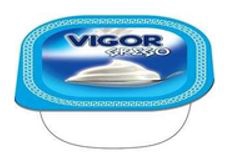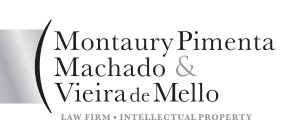Ever since Tridimensional (3D) marks were introduced in Brazil by the Industrial Property Law of 1996, there has been a reluctance to seek this form of protection.
In the last decade, only approximately 300 registrations for 3D marks have been granted by the BPTO, and less than 500 since 3D marks have been accepted in Brazil altogether.
This number can also be a result from a very narrow and heavy-handed examination by the BPTO concerning 3D mark cases, especially not taking into consideration the market in which these signs are inserted.
Nonetheless, recently, an important decision was issued by the Brazilian Federal Court that may be a new turning point for 3D marks in Brazil.
In 2013, the company VIGOR ALIMENTOS S.A. filed a 3D mark application for its Greek yogurt packaging with the BPTO, as below, which was rejected in 2016 on the grounds that the involucre is common or a usual shape of a package.

Despite the administrative appeal, the understanding that the above shape was ordinary and did not require exclusivity was maintained. Thus, VIGOR ALIMENTOS S.A. brought a Federal Court Action against the BPTO and to corroborate its arguments it attached proof of extensive expenses with advertising of the product, which always disclosed the package, as well as a market survey carried out among 500 individuals in which 70.6% identified the container as Vigor Greek Yogurt.
Contrary to the BPTO´s understanding, the Federal Court ruled that the evidence presented showed that the package acquired distinctiveness and there was no doubt that it was recognized by the consumers in its market. The decision also highlighted that that a 3D mark does not need to be luxurious or exquisite, but simply provide enough distinctiveness to be recognized among its target consumers. Hence, the 3D mark registration for the VIGOR Greek Yogurt packaging was granted. The BPTO appealed, but the decision was maintained.
Once again, this brings light to the discussion of the BPTO disregarding supposedly common signs that have, over time, acquired distinctiveness in the market in which they are inserted.
For context, acquired distinctiveness, or secondary meaning, is not formally accepted as an argument at the Trademark Office and, most of the times, the Examiner focuses solely whether the image or expression is distinct or not. For such reason, more often than not, Trademark Owners must resort to legal action to have their distinctiveness judicially recognized as in the above case, a time and money consuming remedy.
This is not the first time that a 3D mark has been judicially established, but it was the first in which the applicant attached a market survey in a Court Action to proof acquired distinctiveness.
The fact that the Court took the survey into consideration as it did, shows that this is a strategy to invest in the future, specially if the BPTO continues to refrain from recognizing secondary meaning administratively. The survey is a chance to show to the judge that the mark, even though it may have started as common or generic, is now distinctive among the consumers and therefore, earned the right to exclusivity.
Even though the above resolution was taken before the Brazilian Federal Court, one cannot discard that this decision may also impact on future examinations of 3D marks by the Brazilian Trademark Office as well.





